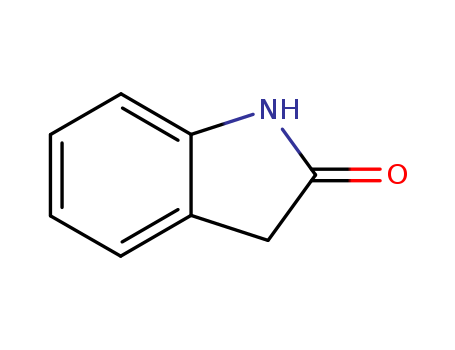- Chemical Name:Oxindole
- CAS No.:59-48-3
- Molecular Formula:C8H7NO
- Molecular Weight:133.15
- Hs Code.:2933.99
- European Community (EC) Number:200-429-5
- NSC Number:274863
- UNII:0S9338U62H
- DSSTox Substance ID:DTXSID80870389
- Nikkaji Number:J1.393E
- Wikipedia:Oxindole
- Wikidata:Q2018788
- Metabolomics Workbench ID:54435
- ChEMBL ID:CHEMBL40823
- Mol file:59-48-3.mol
Synonyms:2-Indolinone(7CI,8CI);Oxindole (6CI);1,3-Dihydro-2H-indol-2-one;1,3-Dihydroindol-2-one;2-Indolone;2-Oxindole;2-Oxo-2,3-dihydroindole;2-Oxoindole;2-Oxoindoline;Indol-2(3H)-one;Indoline-2-one;NSC 274863;Oxindol;




 Xn
Xn

